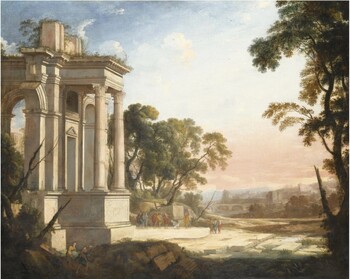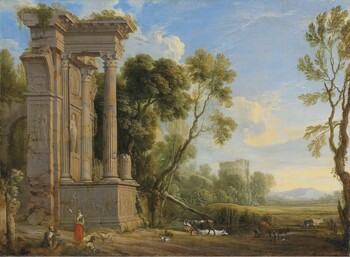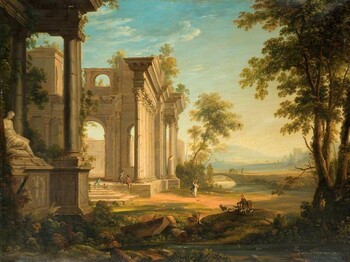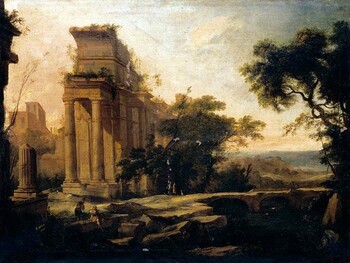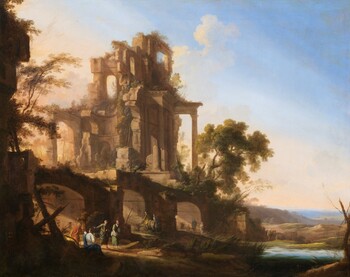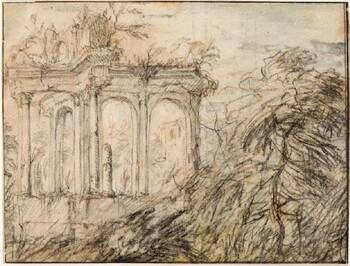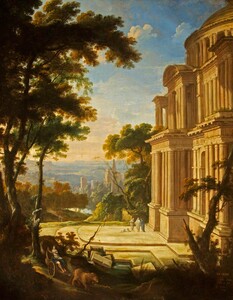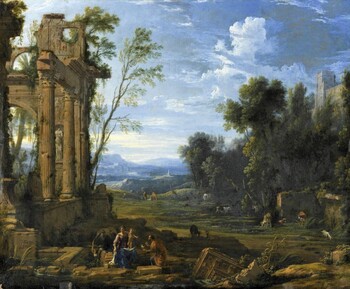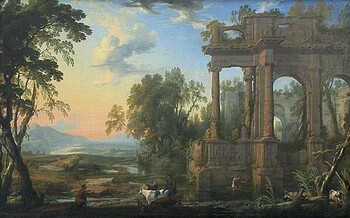An Italianate landscape with Roman ruins of a Nymphaeum
Oil on canvas : 50,4 X 60,4 cm
Unsigned
Frame : 69,2 X 79,8 cm
"All paintings are fully documented with texts and photographs of comparative items. All this information is removed from our website once the painting is sold".
SOLD
Comparative paintings
Click photos for more details

